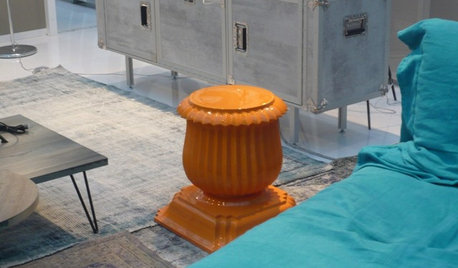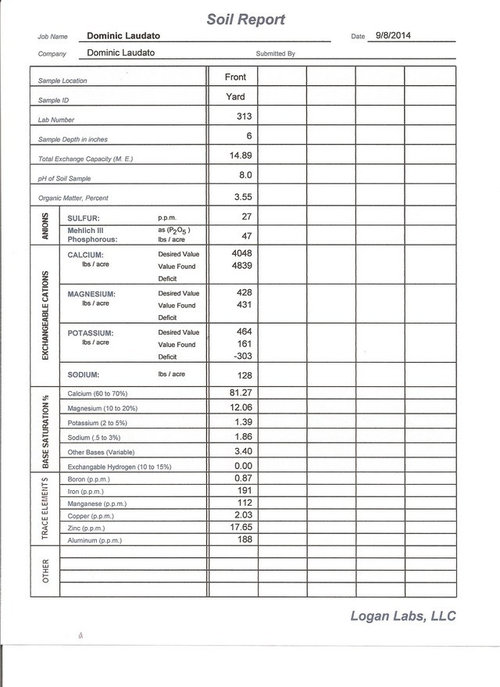Need Help Interpreting Soil Report from Logan Labs
dominic77
9 years ago
Related Stories

Special Report: Interior Design News From Cologne
Take a Photo Tour of the Latest Furniture Innovations Headed Our Way
Full Story
PETSHow to Help Your Dog Be a Good Neighbor
Good fences certainly help, but be sure to introduce your pup to the neighbors and check in from time to time
Full Story
BUDGETING YOUR PROJECTConstruction Contracts: What to Know About Estimates vs. Bids
Understanding how contractors bill for services can help you keep costs down and your project on track
Full Story
EARTH DAYHow to Design a Garden for Native Bees
Create a garden that not only looks beautiful but also nurtures native bees — and helps other wildlife in the process
Full Story
DECORATING GUIDES16 Lounges Go Wild for Science at San Francisco's Exploratorium
See the imaginative designs concocted and let us know which style formula works best for you
Full Story
MOVINGWhat Those Home-Sale Disclosures Are Really Saying
Avoid costly surprises by knowing what’s included in a home seller’s disclosure, what’s not and what you can do if you suspect foul play
Full Story
LIFE7 Things to Do Before You Move Into a New House
Get life in a new house off to a great start with fresh paint and switch plates, new locks, a deep cleaning — and something on those windows
Full Story
STUDIOS AND WORKSHOPSCreative Houzz Users Share Their ‘She Sheds’
Much thought, creativity and love goes into creating small places of your own
Full Story
GARDENING GUIDESAttract Hummingbirds and Bees With These Beautiful Summer Flowers
Roll out a welcome mat for pollinators to keep your landscape in balance and thriving
Full Story
MOST POPULARWhat to Do After a Hurricane or Flood
How you treat your home after a natural disaster can make all the difference in its future livability — and your own personal safety
Full StoryMore Discussions








morpheuspa (6B/7A, E. PA)
dominic77Original Author
Related Professionals
West Milford Landscape Architects & Landscape Designers · Brentwood Landscape Architects & Landscape Designers · Camp Verde Landscape Contractors · Deerfield Landscape Contractors · Dudley Landscape Contractors · Lemay Landscape Contractors · Lorain Landscape Contractors · North Plainfield Landscape Contractors · Ocoee Landscape Contractors · Ringwood Landscape Contractors · Saint Paul Landscape Contractors · Waltham Landscape Contractors · Kingsburg Landscape Contractors · Ansonia Landscape Contractors · Missouri City Swimming Pool Buildersmorpheuspa (6B/7A, E. PA)
lawnman77
lawnman77
morpheuspa (6B/7A, E. PA)